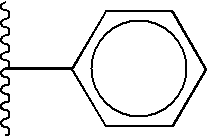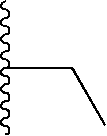Displays for high resolution images and methods for producing same
a high-resolution image and display technology, applied in printing, typewriters, instruments, etc., can solve the problems of insufficient practical application of electrochromic devices, low resolution, and multi-stage processing, and achieve high contrast and long-term stability of displays, suppress loss of electrochromophores, and cost-effective
- Summary
- Abstract
- Description
- Claims
- Application Information
AI Technical Summary
Benefits of technology
Problems solved by technology
Method used
Image
Examples
example 1
[0300] Working Electrode with a Direct Positive One Colour Electrochrome Print (Case 1a)
[0301] Preparation of the Conductive Glass:
[0302] A TEC glass (70.times.70.times.2.2 mm) was immersed in aqueous NaOH / isopropanol solution for several hours, washed with distilled water and dried.
[0303] TiO.sub.2-coating of the Conductive Glass:
[0304] The clean TEC glass was coated with a colloidal solution of TiO.sub.2 using the doctor blade method, as described in the literature. R. Cinnsleach et al., Sol. Energy Mater. Sol Cell 1998, 55.215.
[0305] Preparation of Electrochromic Ink:
[0306] A solution of 0.1 M N-(Phosphono-2-ethyl)-N'-ethyl-4,4'-bipyridiniu-m dibromide in 68 vol % water, 25 vol % methanol and 7 vol % glycerine was prepared.
[0307] Image Editing:
[0308] A gray scale Windows.RTM. bitmap with 300 ppi resolution was converted with Corel Photo Paint (V. 9) to 1 bit colour depth using the Jarvis algorithm. The graphic was then transformed into the negative and imported to CorelDraw.RTM. ...
example 2
[0315] Working Electrode with a Masked One Colour Electrochrome Print (Case 2)
[0316] Preparation of the Conductive Glass:
[0317] As described in Example 1.
[0318] TiO.sub.2-coating of the Conductive Glass:
[0319] As described in Example 1.
[0320] Preparation of Ink for Masking:
[0321] The n-octylphosphonic acid was prepared according to the literature reference Kosolapoff, G. M., "Isomerization of Alkylphosphites. III. The Synthesis of n-Alkylphosphonic Acids", J. Am. Chem. Soc. (1945) 67, 1180-1182.
[0322] A solution of 0.2 M n-octylphosphonic acid in 65 vol % ethylene glycol, 20 vol % methanol and 15 vol % water was prepared.
[0323] Image Editing:
[0324] A gray scale Windows.RTM. bitmap with 300 ppi resolution was converted with Corel Photo Paint (V. 9) to 1 bit colour depth using the Jarvis algorithm. The graphic was then imported to CorelDraw.RTM. (V. 9). Afterwards the white pixels were converted to be transparent and the black pixels were turned to white. Finally, a rectangle of pure ...
example 3
[0331] Working Electrode with a Direct Positive One Colour TiO.sub.2 Print (Case 3)
[0332] Preparation of the Conductive Glass:
[0333] As described in Example 1.
[0334] Preparation of the Ceramic Ink.
[0335] 3 ml of an aqueous colloidal solution (15 w-% TiO.sub.2 as described in EP 0 958 526 was diluted with 2 ml of a solution of 25 vol % MeOH in distilled water.
[0336] Image Editing:
[0337] As described in Example 1.
[0338] Ceramic Printing (FIG. 1):
[0339] The clean conductive glass was put into the caddy using the adapter. The diluted colloidal was filled into the vessel sitting on the cyan conection sleeve. Several sequential purge cycles were manualy triggered. The jet of the colloid was checked before printing. The image was then printed using the Epson.RTM. Stylus Color 440 driver for Windows NT.RTM. 4.0 Version 3 (driver settings: normal paper, 720 dpi, colour mode, other parameters default). Afterwards the solvent was removed with a hot-air blower. The printing was repeated one tim...
PUM
| Property | Measurement | Unit |
|---|---|---|
| time | aaaaa | aaaaa |
| crystallite size | aaaaa | aaaaa |
| thickness | aaaaa | aaaaa |
Abstract
Description
Claims
Application Information
 Login to View More
Login to View More - R&D
- Intellectual Property
- Life Sciences
- Materials
- Tech Scout
- Unparalleled Data Quality
- Higher Quality Content
- 60% Fewer Hallucinations
Browse by: Latest US Patents, China's latest patents, Technical Efficacy Thesaurus, Application Domain, Technology Topic, Popular Technical Reports.
© 2025 PatSnap. All rights reserved.Legal|Privacy policy|Modern Slavery Act Transparency Statement|Sitemap|About US| Contact US: help@patsnap.com



